Ceviche is the famous dish from Latin America where fresh fish and other seafood is “cooked” in lime juice and mixed with chilli, coriander/cilantro, onion and other flavourings. Also known as cebiche, seviche or sebiche, this quick and easy recipe makes a wonderful light meal for hot summer days, or an elegant starter.
The one thing that makes this ceviche recipe stand out from the rest is that it’s not too sour. Limes in South America aren’t as sour as ours!
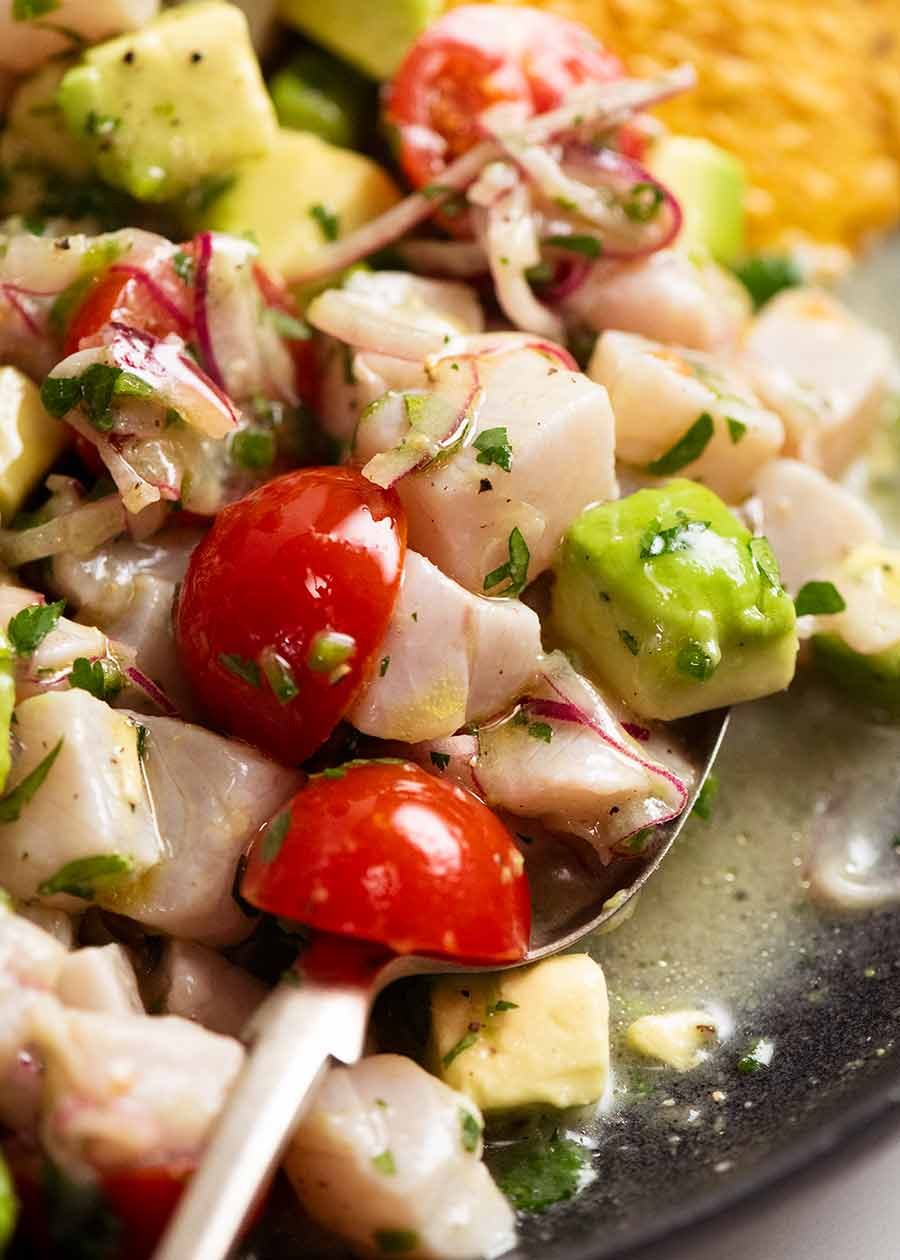
Ceviche
Originating from the west coast of South America, today ceviche can be found in various forms from Mexico down to Peru and beyond. It’s also a dish that has been embraced by fine dining establishments around the world. It plates up elegantly and is an ideal light seafood starter to precede a richer main.
Plus, it’s the sort of dish that people don’t ordinarily think of as simple to make at home, so restaurants readily charge a small fortune for it.
I’m here to bust that myth! As long as you can get your hands on sparkling fresh fish, ceviche is dead easy to make – and super quick too!
Buying sashimi-grade fish suitable for raw consumption is readily available these days, making dishes like ceviche infinitely accessible for ordinary folk like ourselves!
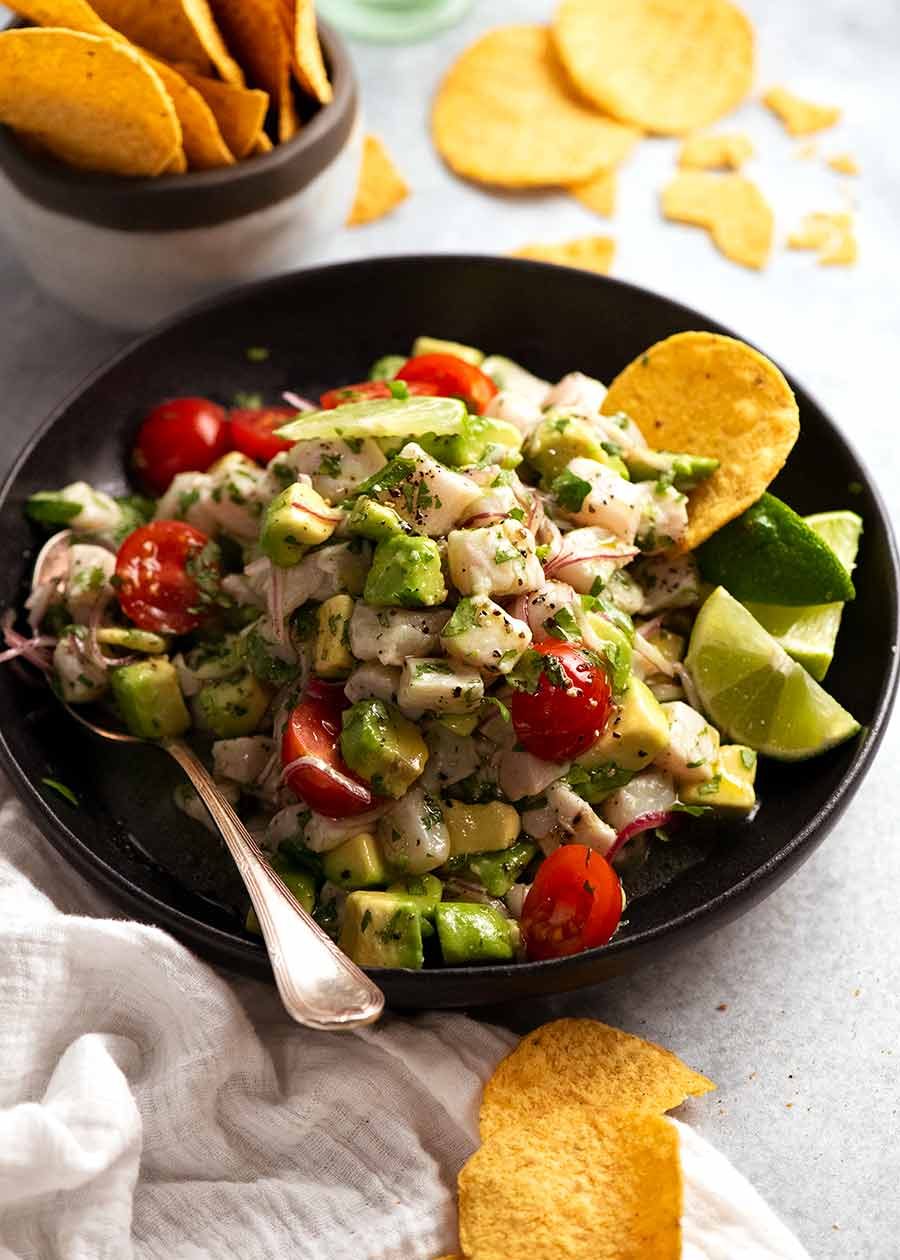
Raw fish + lime juice + 5 minutes = Ceviche!
At its core, Ceviche is as simple as tossing raw fish with lime juice, then leaving it for 5 minutes to let the acid “cook” the fish, making it turn white on the surface, but still raw inside.
Here’s a comparison of the fish immediately after tossing with lime (fish is still translucent), then 5 minutes later, it’s turned white because it’s cooked!
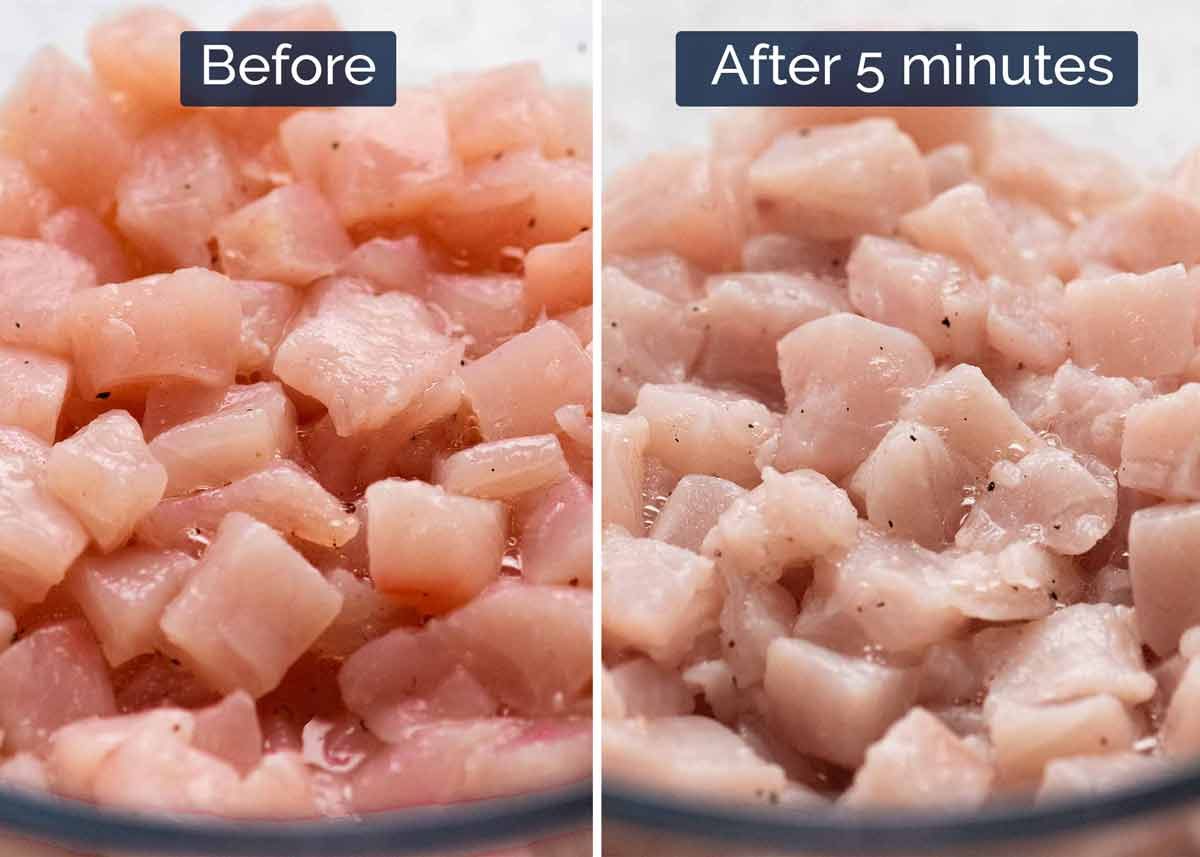
It MUST be sashimi-grade fish
The ONLY fish you should use for ceviche is sashimi-grade fish that is suitable for raw consumption. It is not enough to just buy “fresh fish” from the stores – this only means it’s considered generally “fresh” from the fishmonger’s standpoint. It does not mean it’s necessarily fresh enough to eat raw. You need to check with the fish monger that it is “sashimi grade” (usually it will be helpfuly labelled 🙂 ) and is safe it eat raw.
I know that the thought of eating raw fish from the fishmonger versus at a restaurant might make some people nervous, but food safety standards nowadays here in Australia are such that you shouldn’t have cause for concern. I’ve been eating store-bought raw fish all my life since it became available in the late 90’s and I’ve never had a problem.
Of course, if you happen to have a fisherman friend, you can use virtually any freshly-caught fish – it’s all sashimi-grade! As a child, before sashimi was widely consumed in Australia, my parents would take us fishing every weekend just so we could catch fresh fish for sushi!

Best fish for ceviche
There is no one way to make ceviche, and there is no single “best fish” for ceviche because it’s driven by the types of seafood available in different regions! There’s plenty of options, so I’m going to list the most common ones for you:
Kingfish (pictured above) – prized for it’s soft white flesh, very popular in Japanese sashimi (shows how good this fish is!). This is one of 3 common sashimi-grade fish sold at Australian fish shops (along with salmon and tuna) and a popular choice of fine dining establishments;
Sea bass – traditionally used for Peruvian Ceviche and easily found in the UK/US;
Tuna – popular in Mexico (along with prawn/shrimp);
Mackerel – also popular in Mexico;
Prawns / shrimp – traditional in Ecuador and popular in Mexico, often with a dash of tomato juice;
Halibut or Patagonian tooth fish – Chile;
Salmon – though not traditional (because white fish is traditional), salmon is excellent made into ceviche. Easy to find in Australia;
Bream – many species, depending where in the world and widely used;
Swordfish – if you are lucky enough to get it(!), this is used in some Latin American countries.
Trevally – Although we haven’t seen it mentioned, raw trevally is beautifully soft-textured and would make a fine ceviche. Available at some good fishmongers here in Australia; and
Cod and mahi mahi – Popular options in America.
Fish that is not suitable for Ceviche
As a general rule, fish that are tender and not chewy when raw will make better ceviche. This is because the fish in ceviche is cut chunkier compared to the fine slices used in say fish carpaccio or sushi. Thus fish like snapper, grouper, some cods, flounder, which can be sometimes a bit tough eaten raw, are less suitable.

There’s no one way to make ceviche. Each country, city, restaurant and household has their own way. At its core, however, the avocado and jalapeño in this makes this a Mexican Ceviche.
What (else) goes in Ceviche
Here are the other ingredients required for this recipe:
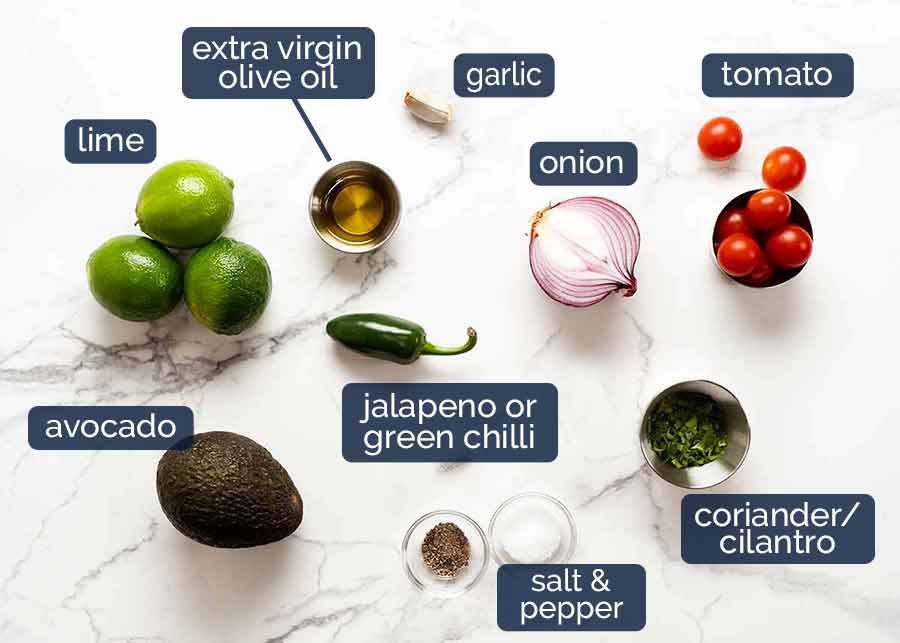
Limes – the essential ingredient that “cooks” the fish;
Extra virgin olive oil – just a touch will take the sharp, sour edge off the otherwise totally sour dish. It’s not strictly traditional to include this, but it’s important to know that limes in Latin America – certainly in Mexico – are often not as sour as those in most Western countries, including Australia and the US. Without oil, I find Ceviche is too sour. Even in Mexico, I found most Ceviches there to be too sour! (*She ducks as Mexicans throw rotten tomatoes at her!*)
Avocado and jalapeño – these add ins are traditional in some versions of Ceviche found in Mexico. Creamy pieces of avocado are a sensational pairing with the delicate pieces of fish!
Coriander/cilantro – essential fresh herb flavouring for ceviche. Coriander haters – sub with chives;
Red onion – very finely sliced so it flops and melds with the fish;
Garlic – crushed using a garlic press so it’s minced finely and “juicy”. We just use 1 small clove – it shouldn’t be overly garlicky; and
Tomato – included in some traditional versions, I really love just adding a bit (not too much) for beautiful pops of colour and fresh juiciness.
How to make Ceviche
The making part is very simple, but I’ve found the key is the order in which ingredients are added – ie what is marinated with the fish, and what is best added later.
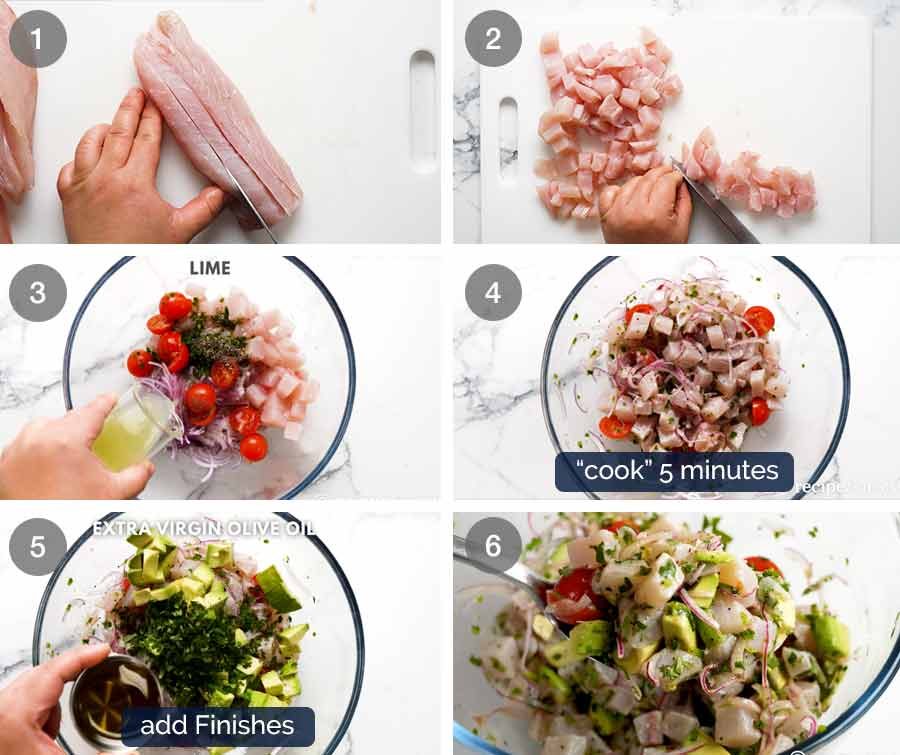
Fish – cut the fish into long strips;
Dice – then cut it into small cubes;
Combine fish with tomato, onion, jalapeño, pepper and lime juice. Do not add salt (this draws water out of the fish), avocado (these get bashed around too much when tossing) or olive oil (this dilutes the acidity of the lime juice and slows down the cooking too much);
“Cook” 5 minutes – gently mix, then set aside for 5 minutes to let the lime “cook” the fish;
Add olive oil, avocado, fresh herbs, salt then gently mix;
Serve immediately.
Despite what other recipes will tell you, there’s no need to be in a manic rush to get the ceviche on the table within 10 seconds otherwise the lime will over cook the fish. Ceviche is certainly best eaten fresh, but it’s still wonderful 20 minutes later. It’s not until around the 30 minute mark that the fish becomes a bit too firm for my taste (literally completely cooked through – but not like stove cooking so it’s not the best texture).
Note: In some countries (such as Peru), ceviche is traditionally left to “cook” for several hours in the lime but larger pieces of fish are used. I like using small pieces – for better texture and ease of eating.


How to serve Ceviche
Just as there is no one way to make Ceviche, there are plenty of ways to serve it too!
In Mexico and other parts of Central America, it’s often served in small “cups” or dishes , cocktail style, with corn chips or crispy tortillas/tostadas for scooping, as pictured above. I like using this idea to make platters of canapés to pass around at gatherings, as pictured on the below right.
In Peru it’s served as a meal with corn on the cob, slices of cooked sweet potato and sometimes with rice. In other countries it comes with plantain chips or rice.
In fine dining restaurants, it’s served in all sorts of fancy ways. One easy way is to spoon individual portions into a small dish with a side of crostini on the side (toasted small bread), as pictured below.
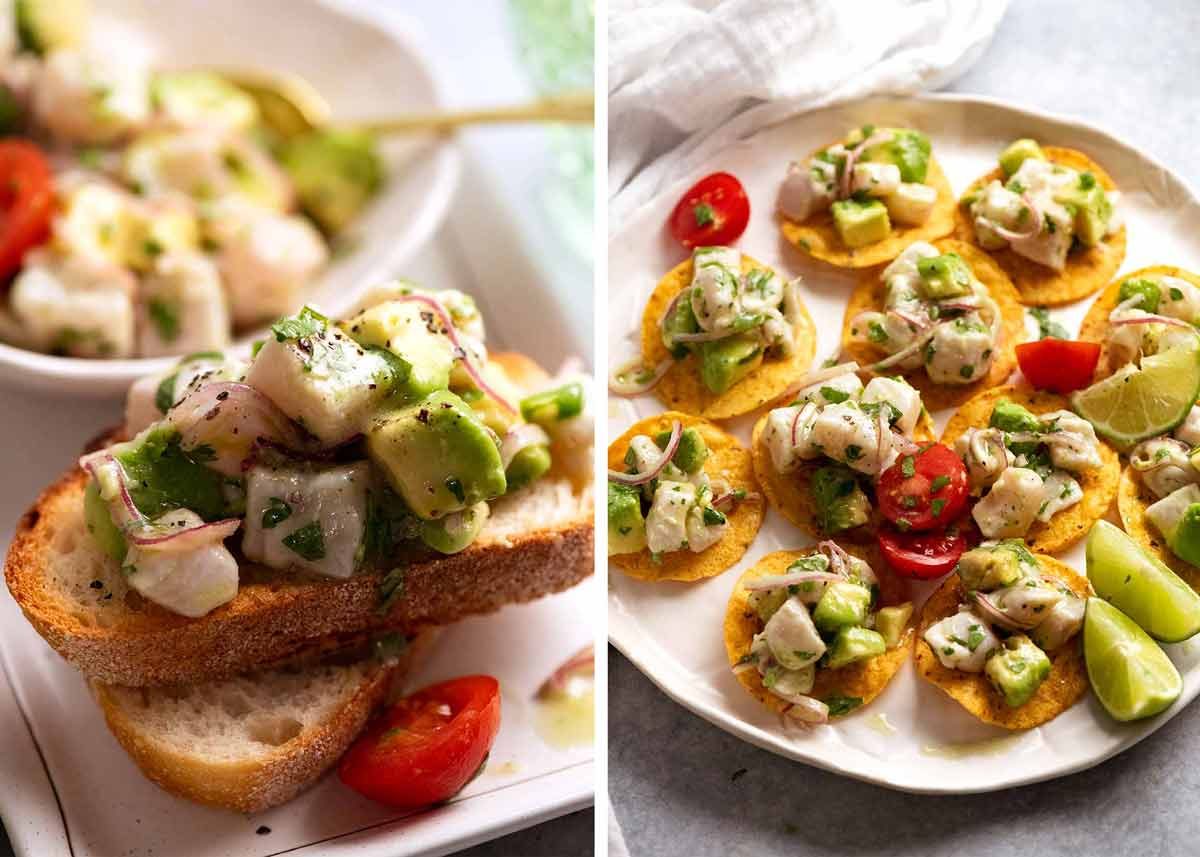
Of course, you can just by-pass all of that and just devour it straight out of the bowl with a spoon, which is exactly what I did. 🙂
I really hope you give this a go one day. Especially those of you who have previously been turned off by overly sour ceviche in the past.
Now – go make friends with some local fishermen! 😂 – Nagi x
Watch how to make it
Hungry for more? Subscribe to my newsletter and follow along on Facebook, Pinterest and Instagram for all of the latest updates.

Ceviche
Ingredients
“Cooked” fish:
- 400g / 14 oz kingfish, tuna, sea bass or other sashimi-grade fish suitable for raw eating (Note 1)
- 1/4 red onion , very finely sliced using mandolin (so it "flops")
- 2 tsp fresh jalapeño , finely chopped (or green chilli) – add more or less for spiciness
- 8 cherry tomatoes , halved (large ones quartered)
- 1/4 tsp black pepper
- 1/3 cup lime juice , fresh (or lemon juice)
Add ins:
- 1/2 tsp salt , cooking / kosher (or 1/4 tsp table salt, Note 2)
- 1 avocado , ripe, cut into 1.25cm / 1/2″ cubes
- 1/4 cup coriander/cilantro leaves , roughly chopped (sub chives)
- 2 tbsp extra virgin olive oil (Note 3)
Instructions
- Cut fish: Cut fish into 1.25cm / 1/2" cubes.
- Toss in lime, leave 5 minutes: Place in a bowl with onion, jalapeño, tomato, pepper and lime juice. Gently toss, then set aside for 5 minutes, mixing gently once.
- Add avocado then serve! Sprinkle over salt, then add avocado, coriander and olive oil. Gently stir, then serve immediately with corn chips (see in post for other ideas).
- Ceviche will be good for 20 minutes or so, then fish will start to overcook and firm up. Do not leave overnight (for food safety reasons).
Recipe Notes:
- Kingfish (pictured in post)- popular choice of fine dining establishments
- Sea bass – traditional in Peruvian
- Tuna and mackeral – popular in Mexico
- Prawns / shrimp – traditional in Ecuador, popular in Mexico
- Halibut or Patagonian tooth fish – Chile
- Salmon – not traditional but excellent for ceviche
- Bream – many species all around the world
- Swordfish – used in some Latin American countries.
- Trevally – not traditional in South America, but beautifully soft-textured and excellent for ceviche
- Cod and mahi mahi – Popular options in America.
Nutrition Information:
More Fresh Fish recipes
More recipes that make the most of sparkling fresh fish!
Life of Dozer
Lazy bugger – stretching out as far as he can to rescue his toy because he can’t be bothered to dive back in. Can you imagine if pool Lifeguards had the same attitude?? I’m gonna stretch out to try to save you, but if I can’t reach you without getting my feet wet then too bad, I’m gonna leave you floating facedown in the pool! 😂

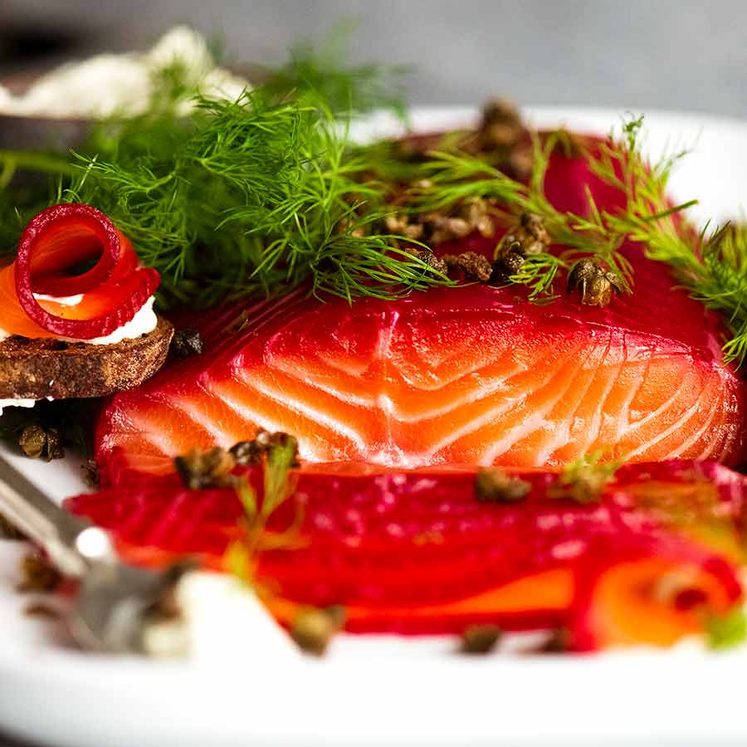
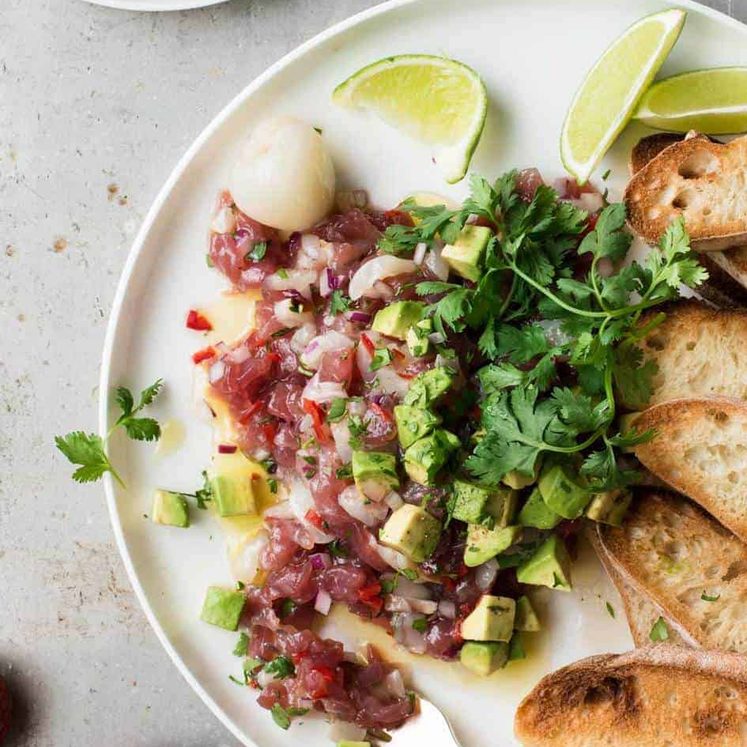
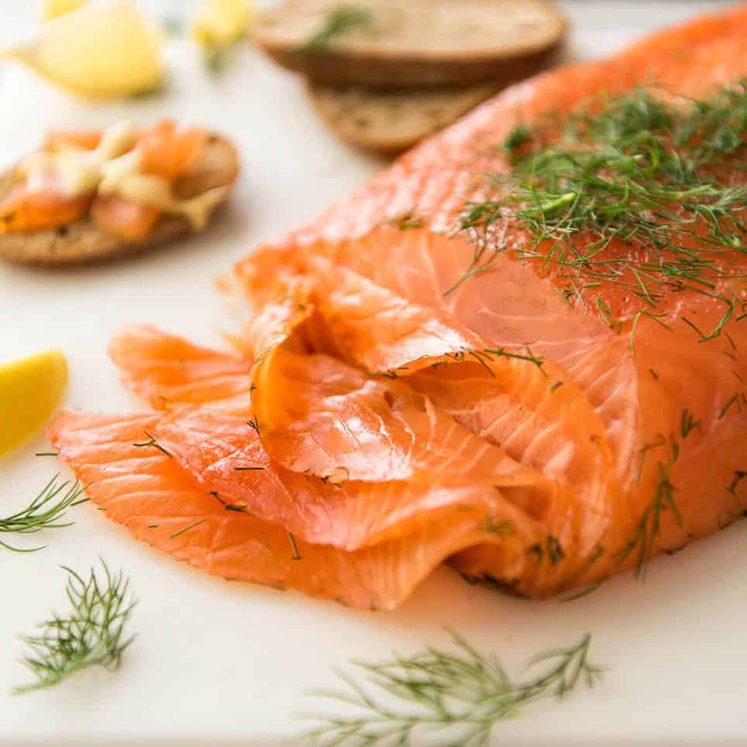
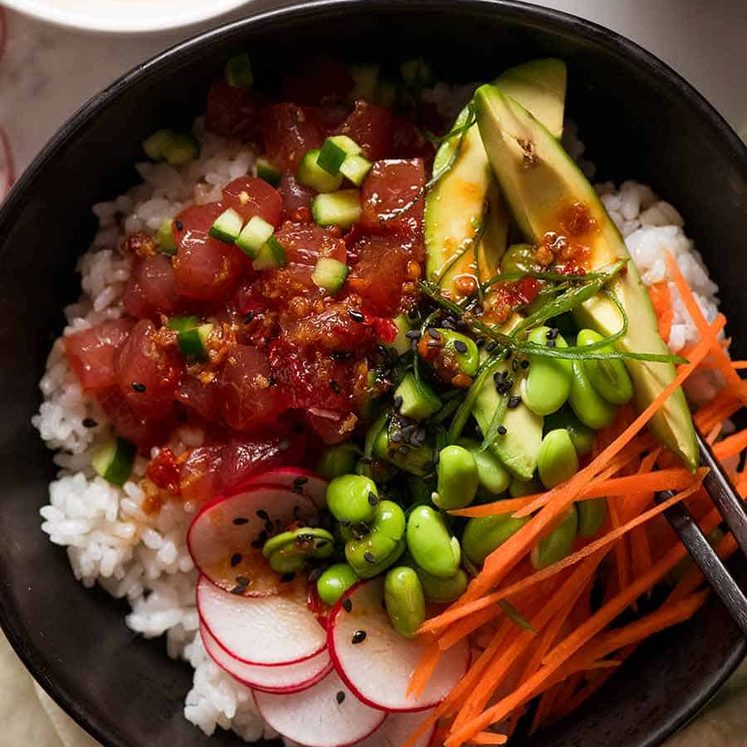
Hi Nagi,
I love all your recipes..I collect and try them all. I would sooo love a great knife to use with all my cooking.
Thanks so much.
I live in North Idaho and love it here. I will be making Ceviche very soon.
Hi Nagi, love your recipes. Can’t wait for Melbourne to reopen so I can get to Queen Vic Market or Footscray Market to buy some fish to make this. I live in COUNTRY VICTORIA so sashimi grade fish not easy to get in my area.
Keep the recipes (and Dozer updates ) coming.
Maree Fay
Good morning Nagi, I live in Sydney and love receiving your emails every week. I cook your recipes at least 5 nights a week and my family know all about you and Dozer. My favorite fish is salmon, as a matter of fact we had your salmon patties last night for dinner. Take care, regards Jodi.
Hi Nagi, I live in regional Victoria and our lockdown has been eased a little so we have taken ourselves to the sea. I have fond memories of ceviche, a Swedish friend who had lived in Mexico made it for me and it was the most delicious thing I had ever eaten. I’m looking forward to making this with either something I can catch or buy at the fisherman’s co-op. Keep up the good work.
Hi Nagi!
This looks absolutely divine! Thank you so much for sharing. I live in Melbourne, Victoria (Aus) & have been looking forward to heading out to my favourite dining places to enjoy some salmon for quite some time now. For now, this recipe will certainly get me through! Fingers crossed not too long now until we can get out & about.
-Elissa
Hi Nagi and Dozer! I’m from California USA where we have lots of fresh fish available but sadly I can’t eat seafood! Love your blog – so many delicious recipes, mouthwatering photos and videos are so helpful. Making the Malaysian Chicken Satay curry tonight! Love to you and Dozer from me and my golden oldie, Charlie ❤️
Christchurch, New Zealand. I miss John Dory that’s my favorite, can’t seem to get it over here – shame 🙁
My kids and I have been making your ‘world’s easiest yeast bread’ recipe during lockdown (we live in Melbourne) and we have shared it with all our neighbours – it’s very popular! Thanks Nagi
I love your website.
You have so many yummy and easy recipes. I haven’t tried this recipe. My favorite so far is your Spanish Healthy Vegetable soup. Your website is so informative and helpful.
I love your Dozer updates too.
Thank you so much
Nancy
Hi Nagi, I’m in New South Wales, Australia.
I am a fan of Barramundi! Had a nice barramundi goan curry yesterday.
Love your recipes and seeing what Dozer is up too!
Thanks again!
I live in Burnaby B.C., Canada and my favourite fish is salmon.
Hi NaGi, I’ve been Following your site for several years my favorite recipe or should I say treasure is Charlie. I live in the USA Phoenix Arizona-hotter than- here😏 Which surely like to win one of your knives something I’ve wanted my whole life and couldn’t afford it. Love Dozer He makes me smile.
Hello Nagi and Dozer, I haven’t made the ceviche yet but Samosa Pie is absolutely excellent as well as Prawn Tacos with taco slaw and the pink sauce. I love getting your posts. My favourite fish is Rainbow trout (husband caught) and salmon.
My name is Peter Johnson.
I live in Australia (Hunters Hill).
My favourite fish is blue-eye cod, also known bluenose, big-eye, blue-eye, bluenose warehou, deep sea trevalla, sea trevally, ocean blue-eye, violet warehou, labyrinth fish and black butterfish. It is considered by many people to be one of the finest table fish caught in southern waters. It is a very versatile and popular fish, due to its firm, moist and delicately flavoured white flesh. Fillets are great grilled or fried.
Hi Nagi, We love in VICTORIA, Melbourne in fact, and we looooove your recipes!
Thank you for being such a good soul and for thinking of us in what has been at times, a scary and difficult year. Thankfully most of us are safe and well fed. Julia and family xxxxx
Ooooh, and our favourite fish is salmon. 😬
NSW Australia. I love atlantic salmon for it’s versatility and also barramundi if it’s on sale! Thanks for all you do xxx
My favorite sushi fish is ahi, I like all fish especially halibut and grouper. Love your blog and your recipes.
Beautiful Coffs Harbour NSW. Favourite fish is Barramundi. Just love your recipes and seeing Dozer drool over your food.
Hi Nagi, I live in San Diego, California, USA, but thanks to this computer-age world we live in I can enjoy fantastic & yummy recipes from my favorite chef in Australia. Love how you present all the recipes & esp. the videos. You make it all look so simple. Also love hearing about & seeing Dozer. Salmon is my very fave fish, although I love Catfish, Halibut, Swai, etc.